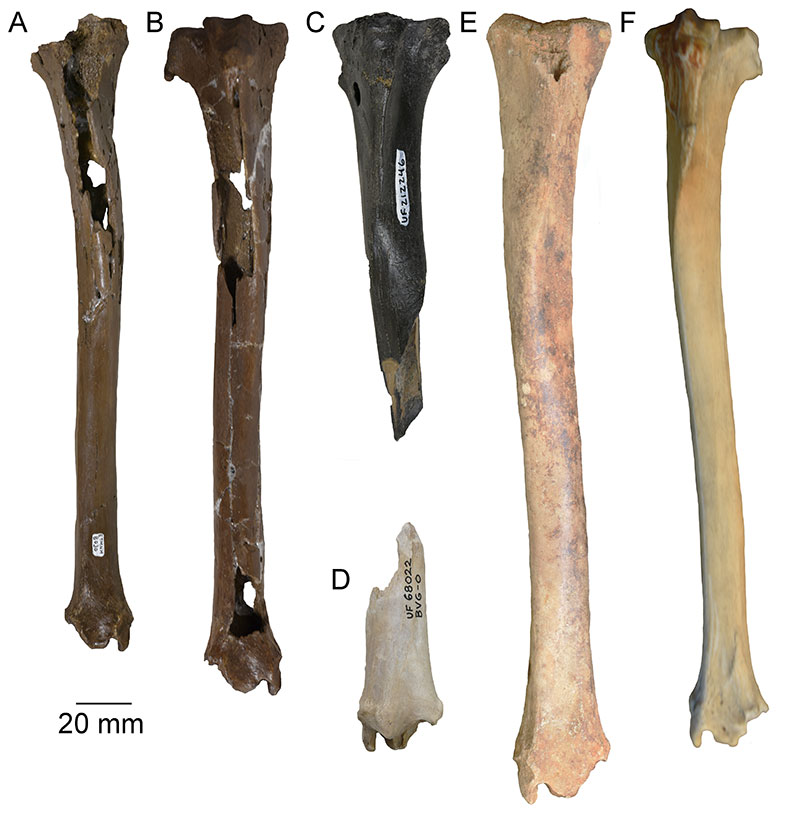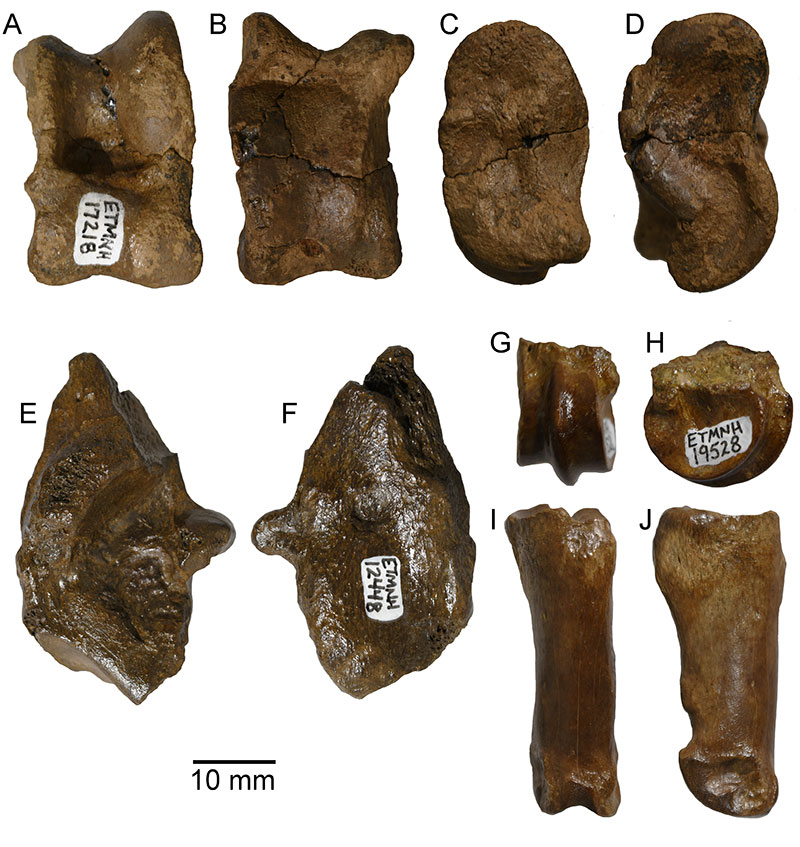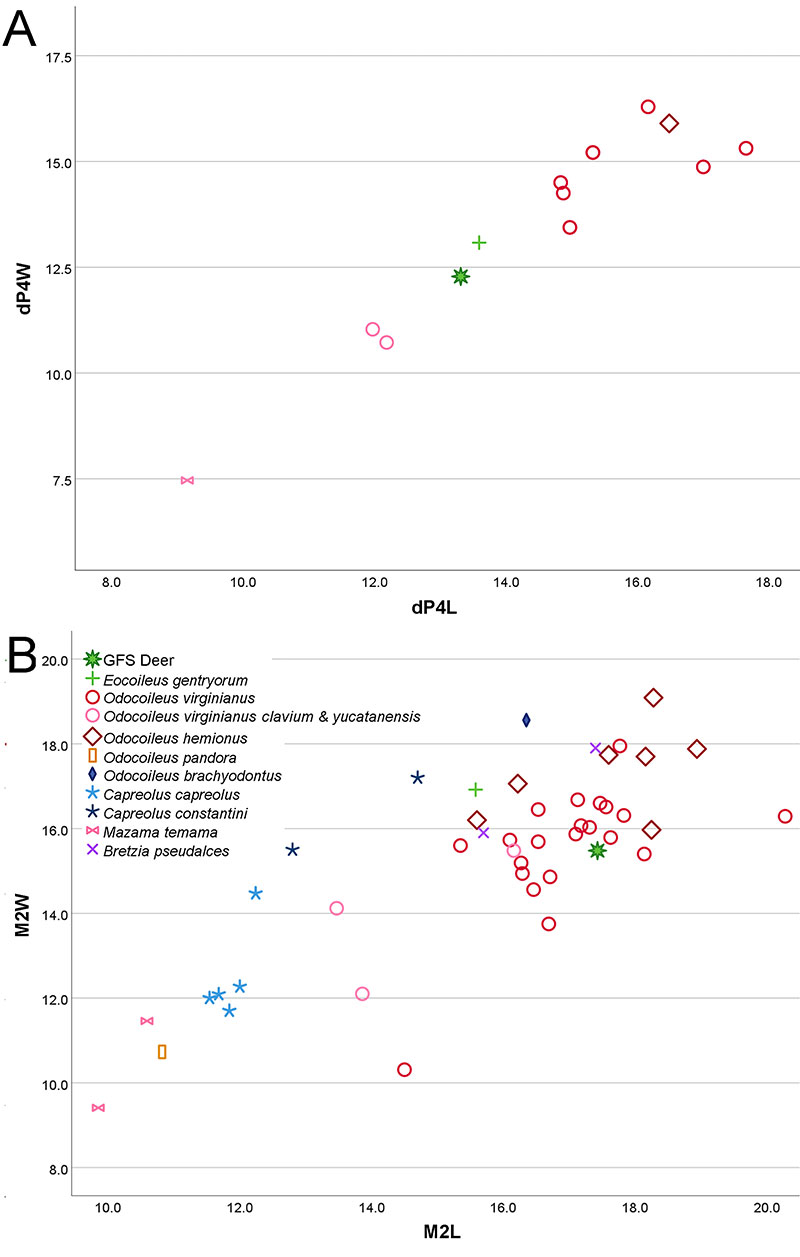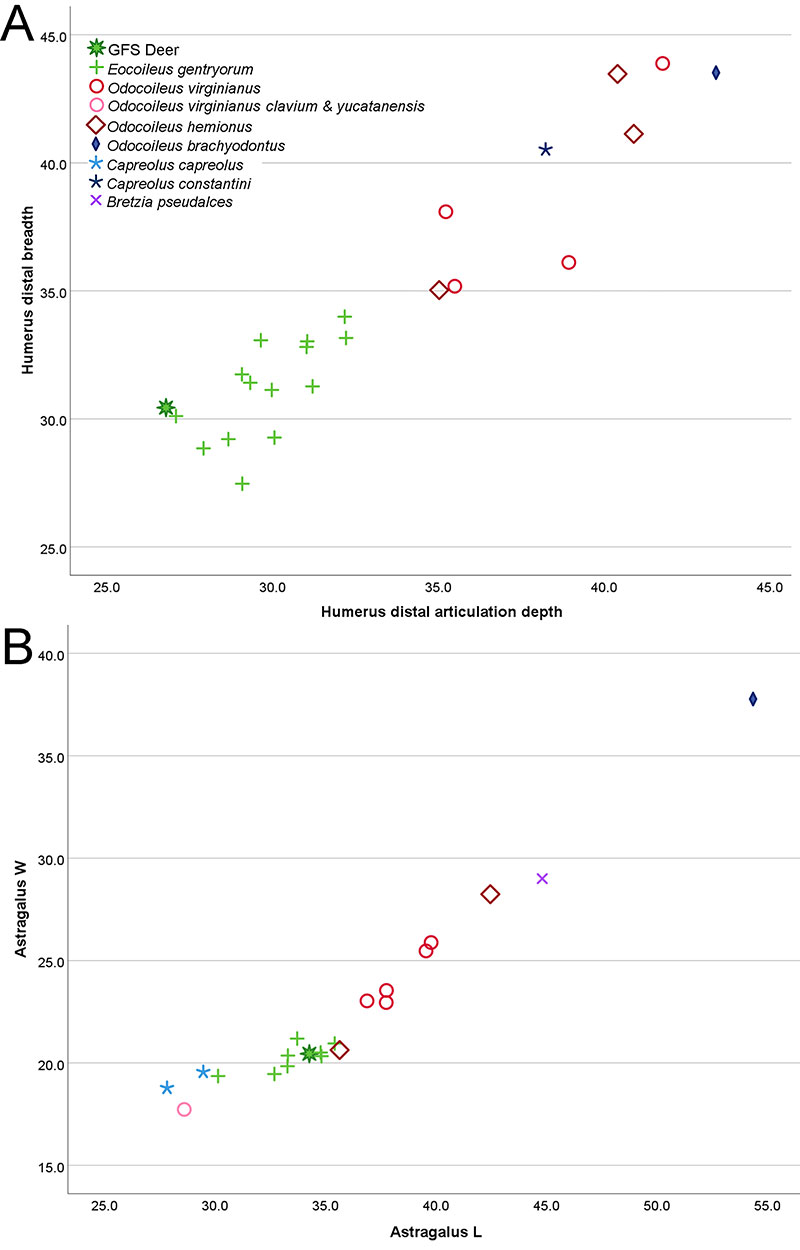FIGURE 1. Late Miocene to early Pleistocene fossil occurrences of Cervidae in North America. Colors indicate age (NALMA) for each occurrence and symbols indicate taxa as follows: Square - Bretzia, Diamond - Eocoileus, Circle - Odocoileus, Pentagon - Capreolus, Plus -indeterminate/contentious. New cervid occurrence from Gray Fossil Site of Tennessee is indicated by a Star. Data derived from the MIOMAP/FAUNMAP databases (Carrasco et al., 2007; Graham and Lundelius, 2010), NOW Database (The NOW Community, 2024), and recent publications (Gustafson, 2015; Jiménez-Hidalgo and Bravo-Cuevas, 2015; Emery-Wetherell and Schilter, 2020; Palma-Ramirez et al., 2023). Full occurrence data listed in Supplemental Table 1.

FIGURE 2. Maxilla specimen with dP3 and dP4 of Eocoileus gentryorum from the Gray Fossil Site, TN (ETMNH 6166) shown in occlusal, labial, and lingual views, along with a line drawing highlighting morphological features. Scale bar equals 10 mm.

FIGURE 3. Dentition of Eocoileus gentryorum from the Gray Fossil Site compared to a sample of fossil and extant cervids: A) ETMNH 6166 Eocoileus gentryorum right dP4 and dP3; B) ETMNH 40000 Eocoileus gentryorum left M2; C) UF 27479 Eocoileus gentryorum (Early Pliocene) right dP4; D) UF 6716 Eocoileus gentryorum right M1; E) UF 6712 Eocoileus gentryorum right M1; F) UF 162947 Eocoileus gentryorum right M2; G) UF 27518 Eocoileus gentryorum right M2; H) UMMP 28140 Odocoileus brachyodontus left M2 and M3; I) UF 276885 Odocoileus virginianus right dP3 - M1; J) USNM 108274 Odocoileus virginianus yucatanensis right dP2 - M2; K) USNM 61217 Mazama temama right dP2 - M2; L) AMNH 35488 Capreolus capreolus left P2 - M3. A - G are Early Pliocene in age, H is Pliocene, I is early Pleistocene, J and K are modern. Scale bar equals 10 mm.

FIGURE 4. Humerus of Eocoileus gentryorum (ETMNH 10559) from the Gray Fossil Site, TN in anterior view, along with a comparative sample of fossil cervids: A) ETMNH 10559 Eocoileus gentryorum distal right humerus; B) UF 134788 Eocoileus gentryorum distal right humerus; C) USNM 299483 Odocoileus brachyodontus distal right humerus; D) UF 239717 Odocoileus virginianus right humerus. A and B are Early Pliocene in age, C is Pliocene, D is early Pleistocene. Scale bars equal 20 mm.

FIGURE 5. Tibiae of Eocoileus gentryorum from the Gray Fossil Site, TN in anterior view, along with a comparative sample of fossil and extant cervids: A) ETMNH 8030 Eocoileus gentryorum right tibia; B) ETMNH 14923 Eocoileus gentryorum right tibia; C) UF 212246 Eocoileus gentryorum proximal left tibia; D) UF 68022 Eocoileus gentryorum distal left tibia; E) UF 276268 Odocoileus virginianus left tibia; F) AMNH 35301 Capreolus capreolus left tibia. A - D are Early Pliocene in age, E is early Pleistocene, F is modern. Scale bars equal 20 mm.

FIGURE 6. Pes elements of Eocoileus gentryorum from the Gray Fossil Site, TN: left astragalus ETMNH 17218 in A) anterior, B) posterior, C) lateral, and D) medial views; right calcaneum ETMNH 12418 in E) medial and F) lateral views; metapodial distal condyle ETMNH 19528 in G) anterior and H) lateral views; proximal phalanx ETMNH 10546 in I) anterior and J) lateral views. Scale bars equal 10 mm.

FIGURE 7. Bivariate plots of upper tooth lengths and widths in millimeters of extant and fossil Cervidae. A) dP4; B) M2. Complete listing of all measurements is included in Supplemental Table 3.

FIGURE 8. Bivariate plots of selected postcranial measurements in millimeters in extant and fossil Cervidae. A) humerus distal breadth and distal articulation depth; B) astragalus length and width. Complete listing of all measurements is included in Supplemental Table 3.


